Search and rescue "space" ATVs
Also, for the delivery of descent vehicles to the destination, it becomes necessary to search and evacuate the device already on Earth, since even at the current stage of development of technology, it is possible to calculate the landing site only with a certain error. The error causes a number of poorly predicted factors, such as wind speed at different heights during the descent or the accuracy of the engines and their braking impulse. For manned vehicles of the “TMA” and “Soyuz-TM” type, the dispersion along the descent route can be up to 400 km, and the lateral deviation - up to 60 km. For example, Soyuz TMA-3 flew over the estimated touchdown point of only 7 kilometers along the highway, and Soyuz TMA-1 did not reach the calculated point 440 km along the highway with a right lateral deviation of 27 km. For unmanned descent vehicles, due to their low weight and dimensions, the deviation can be even greater. Also, the device can land on rough terrain, in a swamp, steppe, and even splash down. In this regard, to search and evacuate aviation, land and sea facilities that perform search operations as part of a search complex or autonomously.
Mi-8 helicopters, An-12 or An-24 aircraft equipped with the appropriate equipment are used as aviation search aids. For ground search of descent vehicles, search-evacuation vehicles specially designed for this purpose are used — high-traffic vehicles, as well as tracked vehicles and snowmobiles.
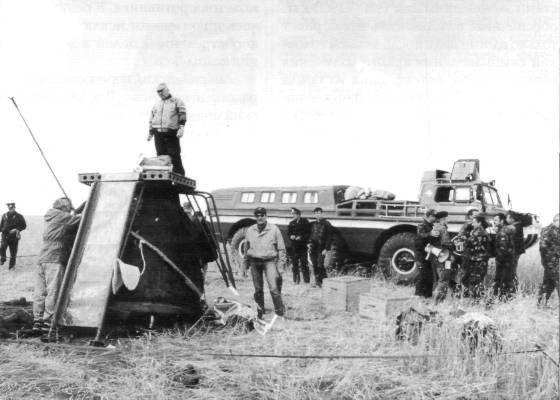
This article will consider the types of ground search and rescue equipment - search and evacuation vehicles.
Search and evacuation vehicles are intended for search and evacuation of descent vehicles and their crews. Machines can perform tasks autonomously or interacting with search planes (helicopters). The search can be carried out in the steppe, wooded, desert, marshland, in the waters of inland waters or on the virgin snow in different weather conditions and at different times of day.
All search and recovery vehicles are designed for transportation by various available means of transport - from air to rail. For delivery by air, the Mi-6 helicopter and the An-12 aircraft are most often used. It should be noted that each search-evacuation machine has its own scope and is designed for its own purposes.
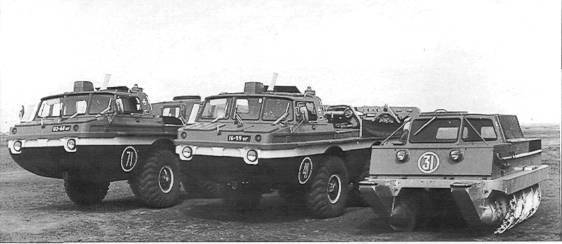
- search and evacuation passenger car PEM-1;
- search and evacuation truck PEM-2;
- search and evacuation passenger car (snow and swamp-going vehicle) PEM-3.
PEM-1 and PEM-2 machines, which were created at the ZIL plant, are floating all-terrain vehicles that have a wheel formula 6x6. The data hulls of search and recovery vehicles are made of polyester resin, which is reinforced with fiberglass. For the manufacture of the frame used aluminum alloy AMG-61. Search and recovery vehicles can overcome water obstacles afloat, move on loose soil (immersion of wheels up to 50 cm), over snow (immersion of wheels up to 1 meter), bog (immersion of wheels up to 70 cm). The range in such conditions is up to 200 kilometers at speeds from 7 km / h (when passing through the swamp) to 40 km / h (when driving on solid ground).
The main fields of application of PEM-1 (2) with these characteristics are the steppe rugged terrain, which has a small number of trees and a large number of different water obstacles. The main base area can be located at a distance 300 kilometers from the search site.
PEM-3 was manufactured on special auger chassis from two longitudinally located multi-turn screws. Thanks to this, the speed of the machine can reach 15 km / h in the swamp and loose snow at a distance of 20 kilometers. However, this machine cannot move on the ground or the highway. In this regard, the main scope of PEM-3 is wetland with shallow water barriers and snow cover reaching the 1 meter. PEM-3 to the search site is delivered using PEM-2, equipped with a crane. The lifting capacity of the 3,4 crane is t. It is used to lift the PEM-3 or the descent vehicle to be laid in a special box.
For the implementation of search work using all types of search and recovery vehicles. However, the PEM-3 is used only in cases where it is impossible for the PEM-1 and PEM-2 machines to perform a search in the search areas. The crew evacuated, as a rule, on the PEM-1, since it has a special passenger cabin for astronauts, and the PEM-2 evacuates the descent vehicle.
To increase the efficiency of the search, the machines are equipped with several systems: the Kvadrat navigation system, the ARK-UD automatic radio compass, the Pelikan radio direction finder, the NKPU-1 and КАР-1 radio stations, and the P-855UM, Coral, Zhuravl and lighting equipment - manual searchlight RSP-45 and light-signal beacon OSS-61.
Radio communication equipment is used for two-way communication in telephone and telegraph modes inside the search complex and for communication with the control center. This type of equipment includes the Balkan-5, Crane-10, Crane-Coral, Coral, P-802В, Р-860, Р-809М2, Р-855UM radio stations, as well as a transceiver complex P-836 + RPS. The equipment operates in the HF, KB, and VHF bands at 0,12 power - 500 watts. This allows you to have a permanent reliable connection with control centers and aircraft at a distance of 100 kilometers in the VHF range and up to 600 kilometers in the HF range.
The short range of communication operating in the VHF band with the crew of descent vehicles after landing is caused by the small power of individual radio stations.
For direction finding radio stations and radio beacons installed on the descent vehicles, designed specials. equipment, which includes ARK-UD and ARK-U2 automatic radio compasses, KAR-1, Orel and Pelikan radio direction finders, as well as NKPU-1 portable direction finders. Direction finding carried out at frequencies from 1,5 to 150 MHz. HF direction finding range is about 25 kilometers, and VHF - 2 kilometers.
Navigation equipment is necessary to exit search-evacuation vehicles in a given area and determine the location of the vehicle. The equipment includes a navigation system such as NVNT, "Square" and the magnetic compass KI-13. Recently, search engines are increasingly using the GPS system.
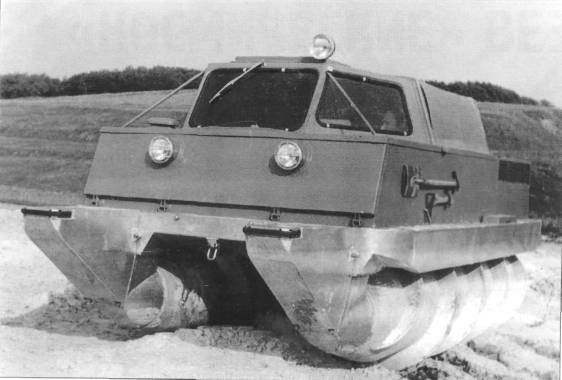
The lighting equipment installed on search and evacuation vehicles is designed to search for descent vehicles in conditions of insufficient visibility and adverse weather conditions, as well as to indicate the location of the vehicles. Lighting equipment includes a manual RSP-45 searchlight with a detection range of descent vehicles up to 300 meters and a light signal beacon OSS-61, which emits red signals with a frequency of 1 Hz. The range of visual detection of a beacon in simple weather conditions may be 25 kilometers.
In addition, search and recovery vehicles are equipped with PM-5 radio beacons, whose power is 80 W, and the operating frequency range is from 100 to 150 Hz. This equipment serves to facilitate the direction finding of machines using the ARK-UD radio compass by the aviation search forces. With an altitude of 6 thousandths of meters, the direction finding range is 100 kilometers.
The ground search complex, which includes PEM-1, PEM-2 and PEM-3, allows for search and evacuation work in various meteorological conditions and geographic zones, and with the help of special equipment to communicate with the crew of the descent module, control points, provide interaction and coordination search complex. The equipment makes it possible to reach the search area in the shortest possible time and detect the crew and the descent vehicle.

In 2004, Rocket and Space Corporation Energia announced the development of a new reusable manned spacecraft Clipper, which was to change the Soyuz by the 2010 year.
The clipper is a returnable spacecraft that can deliver up to 700 a kilogram of cargo and up to seven crew to orbit. In addition, the autonomous flight of a spacecraft can reach 10 days. In the event of an emergency on the ISS, the Clipper evacuates the crew to Earth.
The launch mass of a spacecraft with a length of 10 meters will be about 14,5 tons. It is assumed that the Clipper, in orbit, will be output by the Russian carrier rocket Onega, which is a deeply modernized carrier Soyuz. The launches of the new spacecraft will be carried out from all Russian spaceports equipped with launch sites for Soyuz, that is, from Plesetsk and Baikonur.
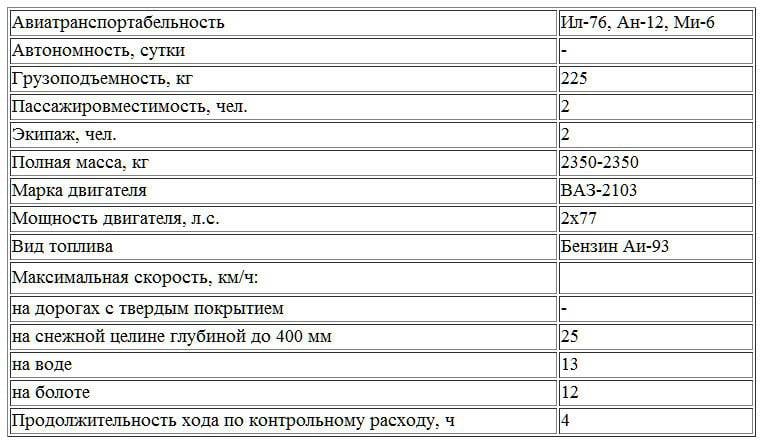
The tactical and technical characteristics of the search and evacuation vehicles used will not allow evacuation of the descent vehicles, as their weight and size characteristics will change. Therefore, when designing and creating a new descent module, it is necessary to resolve issues related to the provision of search and rescue forces with new means entering the search and rescue complex.
When developing a promising space technology, it is necessary to take into account the whole range of issues that arise in connection with its implementation and maintenance, since PEM-2 does not adapt to the weight and dimensions of the Clipper. The Mi-8 is unable to transport such a descent vehicle in the cargo hold or on an external hanger. Consequently, the future complex should be transportable by helicopters and aircraft that are in service with the CPM (Mi-6 and An-12BP). In addition, it should be equipped with modern standard navigation equipment (ARC and 10Р-26). The performance of the complex should not yield to the existing one. The number of passenger seats in the body of the van must be increased to 8-10 people, and the power reserve should be at least 1000 km. Astronauts should be transported to the helicopter in the prone position, machines should be equipped with self-pulling winches.
In connection with the development of new descent vehicles, it is necessary to expect a new stage in the development of search and evacuation vehicles. The advancement of one industry of rocket and space technology is the reason for the need to pull up to its level the entire complex of ground support, including search and rescue.
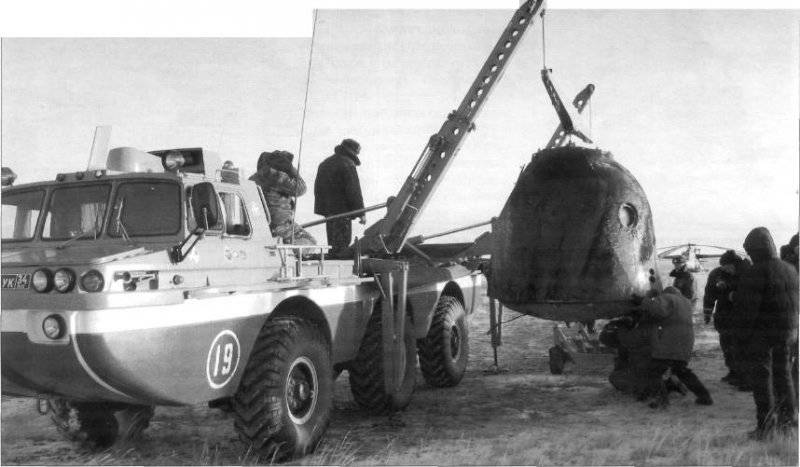
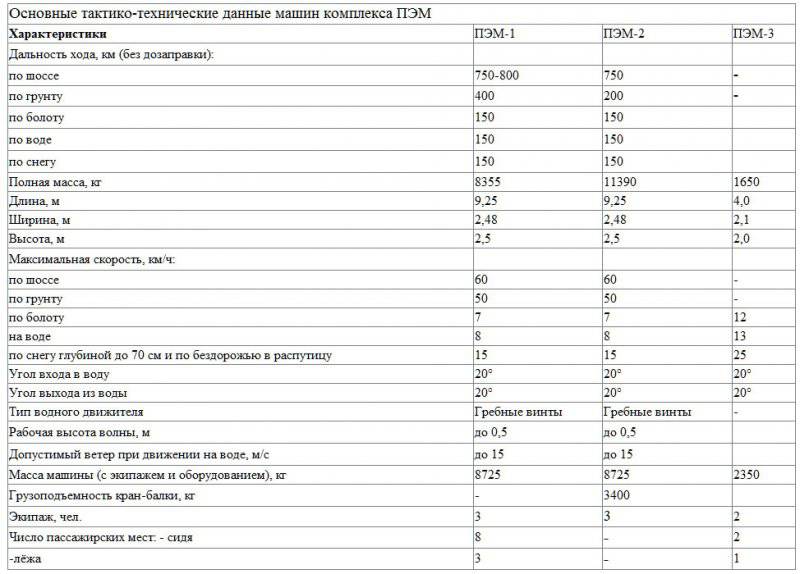

Information